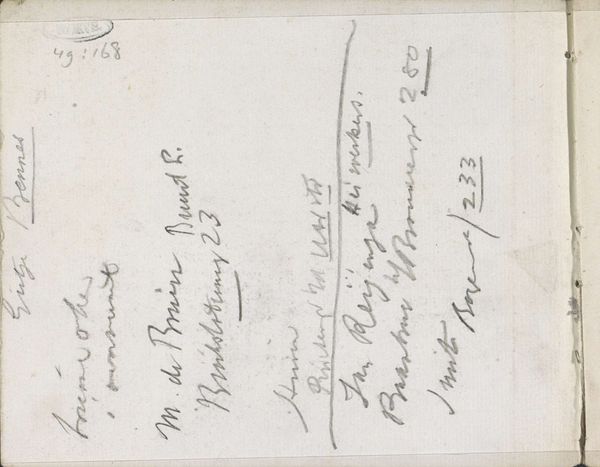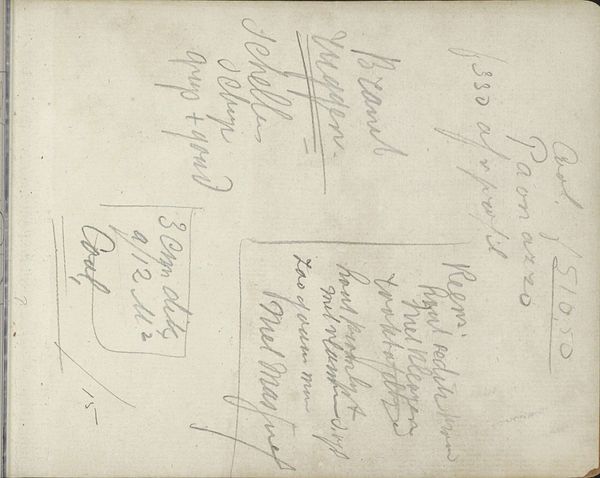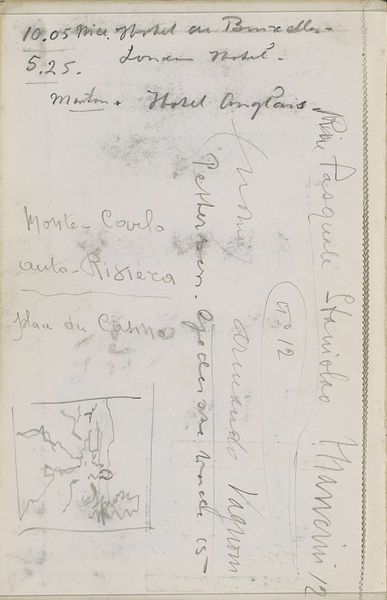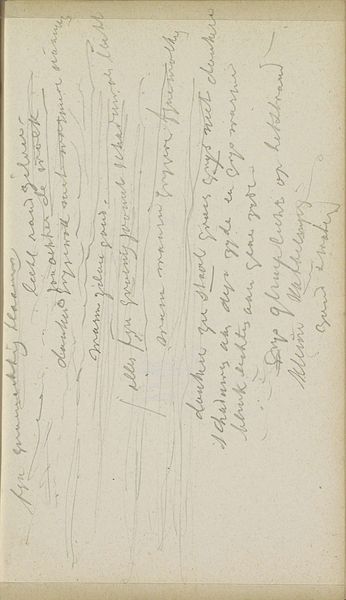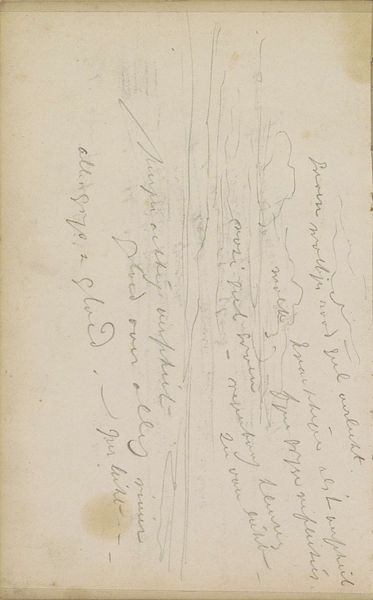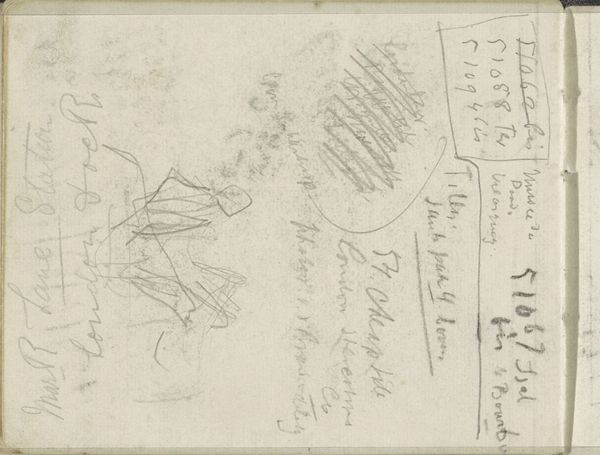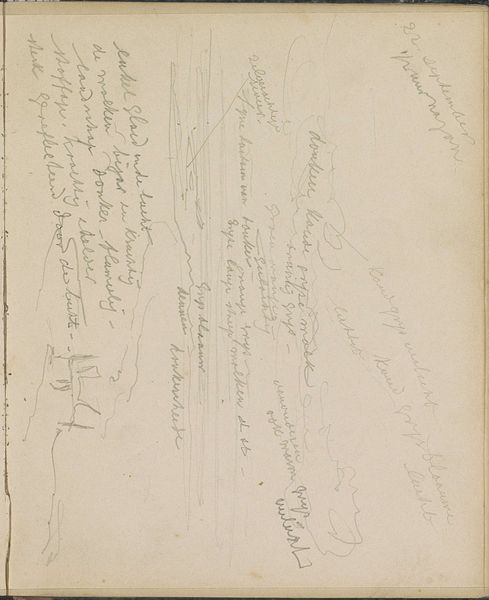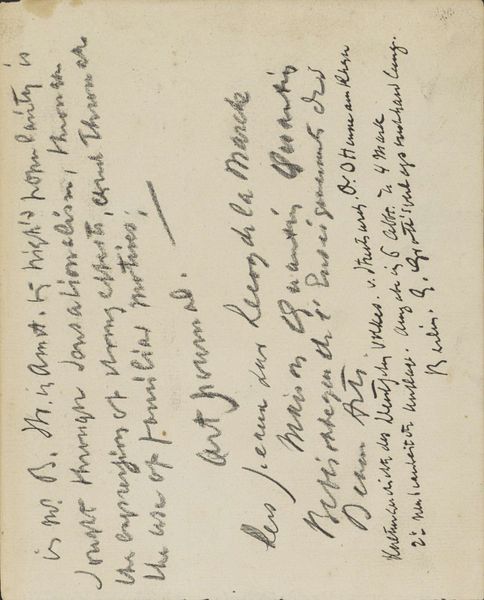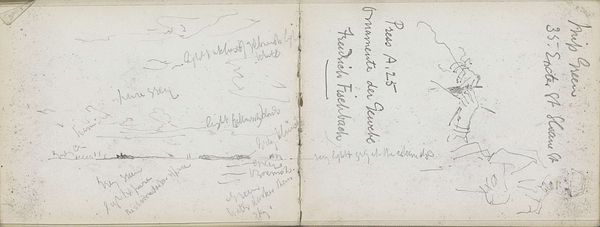
Copyright: Rijks Museum: Open Domain
Editor: This is a drawing titled "Studie," made by George Hendrik Breitner sometime between 1886 and 1923. It's a pencil drawing on paper and looks like a page torn straight out of the artist’s sketchbook. It's mostly text interspersed with a quick sketch of a person. How would you interpret a work like this? Curator: Breitner’s sketches provide unique access to his working process. The jumble of text, likely addresses and notes, alongside the figure hints at the fragmented nature of memory and experience, not unlike modern life itself. What connections might we draw between the written word and the depicted figure? Editor: Well, I notice that the text seems very grounded in reality with all the addresses, while the figure sketch is much more ephemeral and fluid. Curator: Exactly. The juxtaposition emphasizes the tension between concrete reality and subjective interpretation, between observation and imagination. Consider also the impact of Impressionism, which Breitner embraced. It suggests fleeting moments and subjective sensory experiences. Does this interplay shift the way we perceive and remember figures of that era? Editor: That makes a lot of sense. Seeing the notes gives the work such a specific historical context while still hinting at a personal and subjective story. I can definitely see the connection to Impressionism now, capturing a momentary impression on paper. Curator: Precisely. This small drawing holds layers of information, cultural echoes, and personal narratives waiting to be unraveled. Editor: Thanks, I will now forever see sketchbook pages in museums differently!
Comments
No comments
Be the first to comment and join the conversation on the ultimate creative platform.
